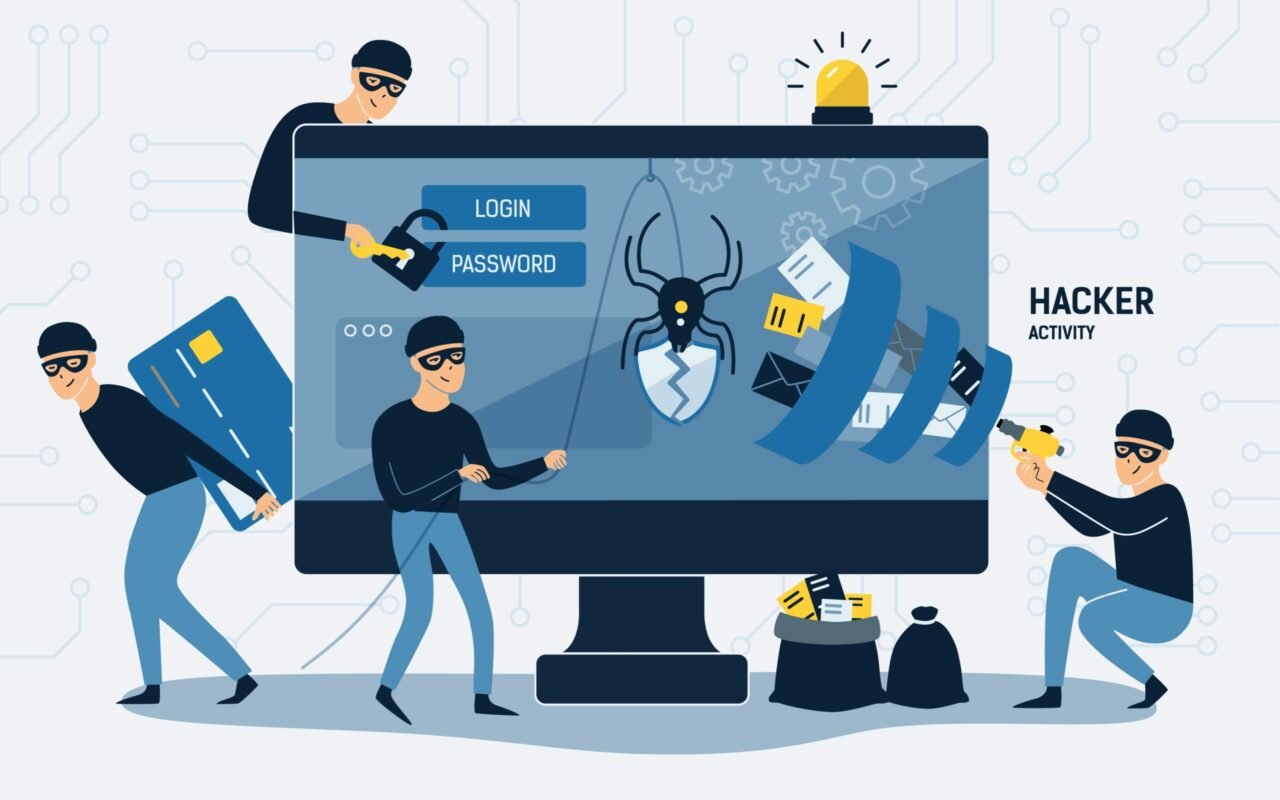WordPress is a free and open-source software that lets you create and manage websites and blogs without any coding skills. WordPress is written in PHP language and uses a MySQL or MariaDB database to store your content. WordPress has many features that make it easy and flexible to use, such as plugins, themes, templates, permalinks, and a content management system. WordPress can support various types of web content, such as portfolios, business websites, e-commerce stores, membership sites, learning management systems (LMS), and more.
WordPress is the most popular content management system (CMS) in the world, powering over 43% of all websites. However, this popularity also makes it a common target for hackers who want to exploit its vulnerabilities and compromise its users. In this blog, we will explore some of the main reasons why WordPress sites get hacked and how you can prevent it from happening to your site.
Table of Contents
Toggle1. Insecure Web Hosting
One of the first factors that can affect the security of your WordPress site is the web hosting provider you choose. Some hosting companies do not properly secure their hosting platform, leaving all websites hosted on their servers vulnerable to hacking attempts.
This can be easily avoided by choosing a reputable and reliable WordPress hosting provider that offers features such as SSL certificates, firewall protection, malware scanning, backups, and updates. If you want to take extra precautions, you can also opt for a managed WordPress hosting provider that handles all the technical aspects of your site for you.
2. Using Weak Passwords
Another common reason why WordPress sites get hacked is the use of weak passwords for various accounts related to your site. These include your WordPress admin account, your web hosting control panel account, your FTP accounts, your MySQL database account, and your email accounts used for WordPress admin and hosting. Using weak passwords makes it easier for hackers to crack them using some basic hacking tools or brute force attacks.
You can easily avoid this by using strong and unique passwords for each account and changing them regularly. You can also use a password manager tool to help you generate and store your passwords securely.
3. Unprotected Access to WordPress Admin (wp-admin)
The WordPress admin area is where you can perform different actions on your WordPress site, such as creating posts, pages, menus, widgets, plugins, themes, users, settings, and more. It is also the most commonly attacked area of a WordPress site because hackers can gain complete control over your site if they manage to access it.
You can protect your WordPress admin area by limiting the number of login attempts allowed, using two-factor authentication, hiding or renaming the wp-admin URL, restricting access by IP address or user role, and using a security plugin that monitors and blocks suspicious activity.
4. Outdated Core Software, Themes, and Plugins
WordPress is an open-source software that is constantly being updated and improved by its developers and community. These updates often include bug fixes, performance enhancements, new features, and most importantly, security patches for known vulnerabilities. If you do not update your WordPress core software, themes, and plugins regularly, you are leaving your site exposed to hackers who can exploit these vulnerabilities and compromise your site.
You can avoid this by enabling auto-updates for your WordPress core software or manually updating it whenever a new version is released. You should also update your themes and plugins regularly or delete them if they are no longer maintained or compatible with your WordPress version.
5. Malware Infection
Malware is malicious software that can infect your WordPress site and cause various problems such as redirecting your visitors to spammy or harmful websites, displaying unwanted ads or pop-ups, stealing your data or credentials, slowing down your site performance, or even deleting your files or database. Malware can infect your site through various ways such as downloading pirated or nulled themes or plugins, clicking on phishing links or attachments in emails or social media messages, visiting compromised websites or networks, or using infected devices or software to access your site.
You can prevent malware infection by using reputable sources for your themes and plugins, avoiding suspicious links or attachments, scanning your devices and software regularly with antivirus programs, and using a security plugin that detects and removes malware from your site.
6. Credit Card Skimming
Credit card skimming is a type of cyberattack that involves stealing the credit card information of your customers or visitors when they make a purchase or fill out a form on your site. Hackers can do this by injecting malicious code into your site that captures the card details and sends them to a remote server controlled by them. This can result in financial losses for you and your customers as well as damage your reputation and trustworthiness.
You can prevent credit card skimming by using a secure payment gateway that encrypts the card data before sending it to the processor.
7. Unauthorized Logins
Unauthorized logins are when hackers or other unauthorized users manage to access your WordPress site using your username and password or other methods. This can allow them to make changes to your site, delete your files or database, install malware or backdoors, or lock you out of your own site.
You can prevent unauthorized logins by using strong and unique passwords for your WordPress accounts, changing them regularly, using two-factor authentication, limiting the number of login attempts allowed, monitoring and blocking suspicious login activity, and using a security plugin that alerts you of any unauthorized logins.
8. Undefined User Roles
User roles are the permissions and capabilities that you assign to different users on your WordPress site. For example, an administrator can do anything on your site, while an editor can only create and edit posts and pages. By default, WordPress has six user roles: administrator, editor, author, contributor, subscriber, and super admin (for multisite networks). However, some plugins or themes may add more user roles or modify the existing ones. If you do not define your user roles properly, you may end up giving too much or too little access to some users, which can lead to security issues or conflicts.
You can avoid this by reviewing and customizing your user roles according to your needs and preferences, deleting any unused or unnecessary user accounts, and using a plugin that helps you manage your user roles and capabilities.
9. SQL Injections
SQL injections are a type of cyberattack that involves injecting malicious SQL commands into your WordPress database through a vulnerable input field on your site. This can allow hackers to access, modify, or delete your data, execute commands on your server, or even take over your site. SQL injections can occur due to poorly coded themes or plugins that do not sanitize or validate the user input before sending it to the database.
You can prevent SQL injections by using reputable sources for your themes and plugins, updating them regularly, disabling the file editing feature in WordPress, and using a security plugin that blocks SQL injection attempts.
10. SEO Spam
SEO spam is a type of cyberattack that involves injecting spammy or malicious content into your WordPress site with the aim of manipulating the search engine rankings or traffic of your site or another site. This can include adding hidden links or keywords, redirecting your visitors to other websites, displaying ads or pop-ups, creating fake pages or posts, or modifying your meta tags or titles. SEO spam can affect your site’s reputation, performance, trustworthiness, and ranking in search engines.
You can prevent SEO spam by securing your WordPress site from hacking attempts as mentioned above, monitoring and auditing your site regularly for any changes or anomalies, and using a security plugin that detects and removes SEO spam from your site.
Conclusion
WordPress is a powerful and versatile platform that can help you create any type of website you want. However, it also comes with some security risks that you need to be aware of and protect yourself from. By following the best practices and tips mentioned in this blog, you can ensure that your WordPress site is safe and secure from hackers and cyberattacks. If you need any help with WordPress security or any other aspect of WordPress development or maintenance, feel free to contact us at Wbcom Designs. We are a team of experienced and professional WordPress experts who can help you with any WordPress-related issue or project.
Interesting Reads:
Pros and Cons of Starting an Online Marketplace Business






